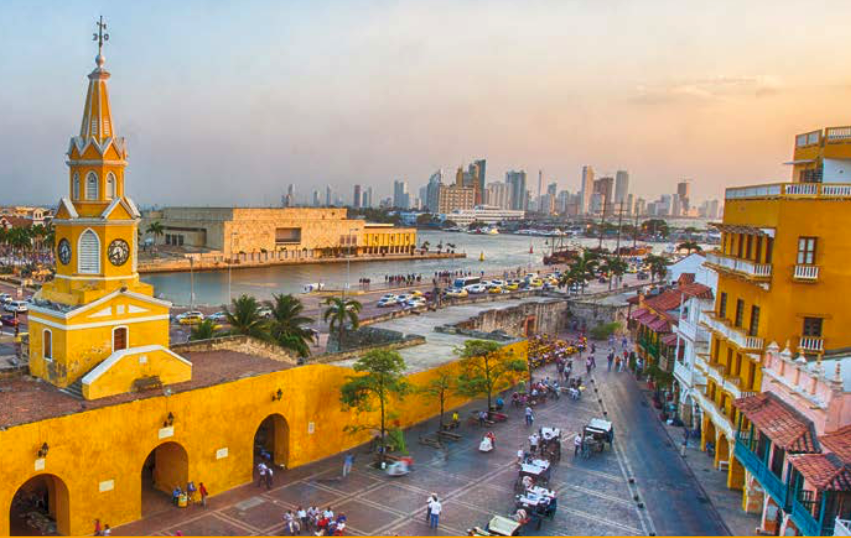Building climate resilience in cities

Introduction
Over half of the world’s population now resides in cities – that is, 54% of the global population or 4 billion people. And the urbanising trend shows no sign of slowing, with the urban population increasing by 57 million people per year.
It is city mayors, as elected leaders of local authorities, who are directly accountable to this growing body of urban residents. Alongside their accountability, local authorities possess local understanding of their city from first-hand experience and are well-positioned to communicate with local stakeholders and mobilise local resources, including people’s time and knowledge. These authorities can develop locally appropriate solutions to risks faced by their city.
Cities can also be hotbeds of innovation and are often ahead of the curve: they can set and advance agendas for national governments and other cities alike, and can generate results and impact faster than actions at the national level.
For these reasons, building climate resilience into cities is both vital for city residents themselves, and an opportunity to enhance resilience beyond the city limits.
However, local accountability is often not accompanied by sufficient decision-making power, capacity or resources to implement, leading to difficulties in moving from diagnosis to action. As a result, many cities have weak formal institutions and face difficulties in delivering adequate basic services, particularly in informal settlements which are home to the most vulnerable urban residents. The scale and pace of urbanisation and unplanned (informal) settlements magnify the challenges facing cities. Secondary and lower-capacity cities, which are often neglected, are growing the fastest.
This article is based on the CDKN Essentials briefing note on building climate resilience in cities, published in June 2017. The pdf is available for download on the right of this page as the ‘Featured Download’. It summarises learning from Climate and Development Knowledge Network (CDKN) work in cities in Africa, Asia, and Latin America and the Caribbean in mainstreaming climate compatible development, and highlights outputs from this work where more details can be found.
Key Messages
- Over half of the world’s population lives in cities, including many of the world’s most vulnerable people.
- Cities can be frontrunners in mainstreaming climate resilience in sectoral planning processes and infrastructure investments.
- There are inspiring examples of engagement approaches, and planning and financing tools to increase cities’ resilience to the physical and health impacts of climate change.
Methods and Tools
Since 2012, CDKN and its partners have been working with urban authorities in Asia, Africa and Latin America to build resilience to climate risks for cities and their most vulnerable residents. This has included advancing and communicating knowledge about planning, financing, and delivery mechanisms available to cities and other subnational entities; catalysing innovation and fostering best practice; and bolstering partners’ capabilities as effective climate knowledge brokers at the local level. Details of these initiatives and resources can be found on the CDKN urban and sub-national areas landing page.
Initiatives and resources: Highlights
Inside Stories highlighting how cities in India are responding to extreme heat, based on extensive work in Ahmedabad in 2013-2015, what other cities can learn from their experience, and opportunities for reducing heat risk through long-term urban planning:
- Addressing heat-related health risks in urban India: Ahmedabad’s Heat Action Plan
- Bhatt, M. and Paul, A. (2017). ‘India Special Edition’. Climate and Development Outlook. London and Delhi: Climate and Development Knowledge Network
An Inside Story and film on integrating climate change adaptation into city planning in Cartagena de Indiasin Colombia through Plan 4C (Cartagena Competitiva y Compatible con el Clima):
- Plan 4C: A Competitive and Climate Compatible Cartagena
- INSIDE STORY: Embedding climate change resilience in coastal city planning: Early lessons from Cartagena de Indias, Colombia
- FILM: Cartagena – thriving in the face of climate change (shown below; for more detail click here)
An Inside Story and film on carbon and water footprinting in Andean cities, describing this effective tool and mechanism for scaling up greenhouse gas measurement and policy measures to other Latin American cities:
- INSIDE STORY: Assessing carbon and water footprints in Andean cities
- FILM: The ‘Cities Footprint Project’ – Urban impact(shown below; for more detail click here)
Research and engagement in cities in India, Indonesia and the Philippines that reviews and illustrates the different forms of local financial sources that are available to cities to enhance their resilience:
(0) Comments
There is no content